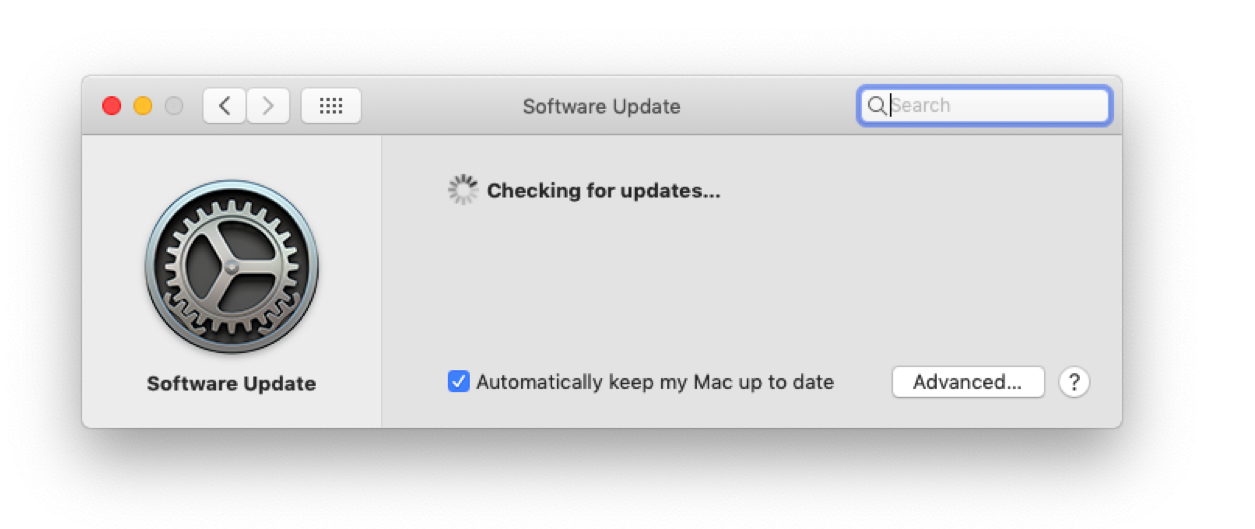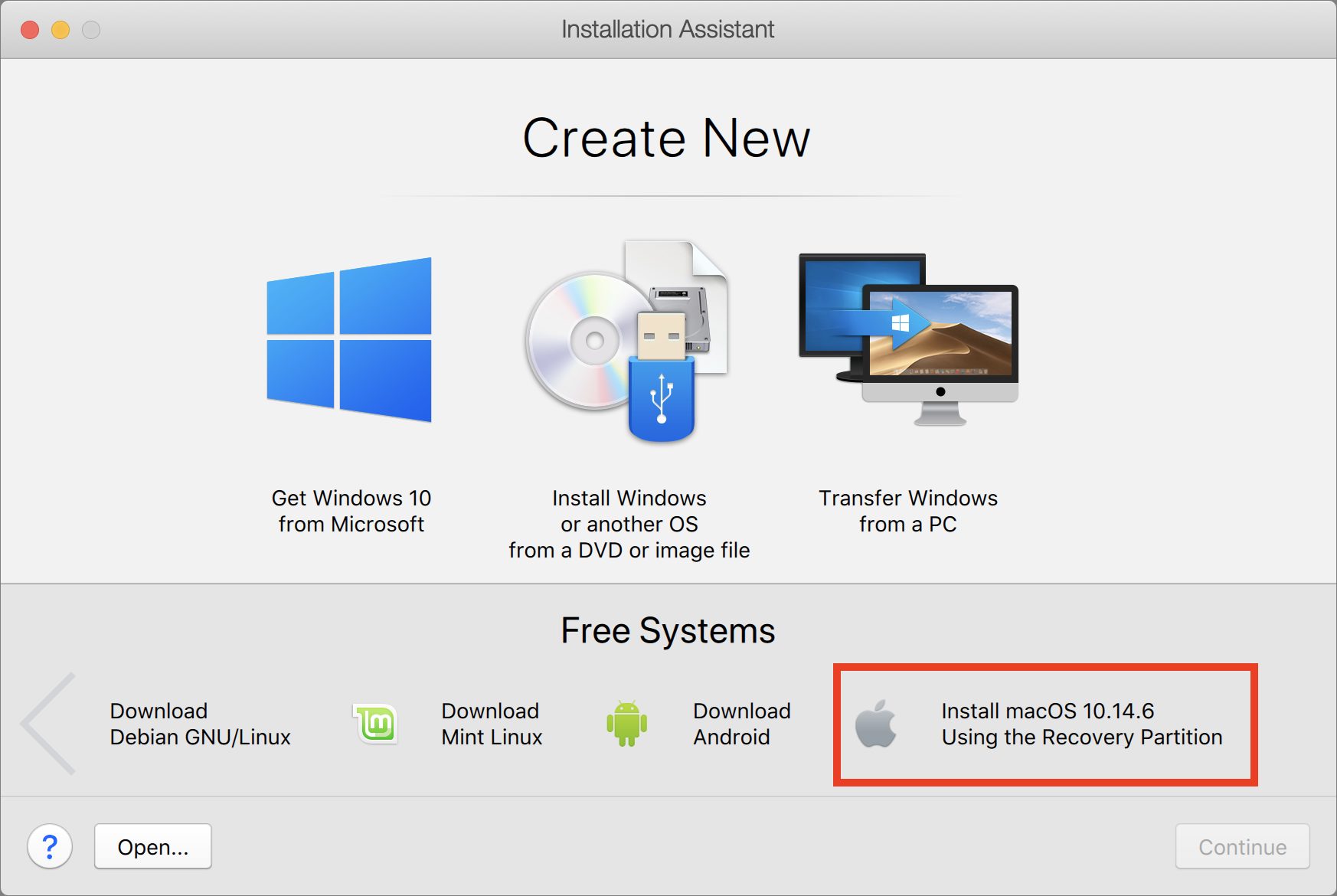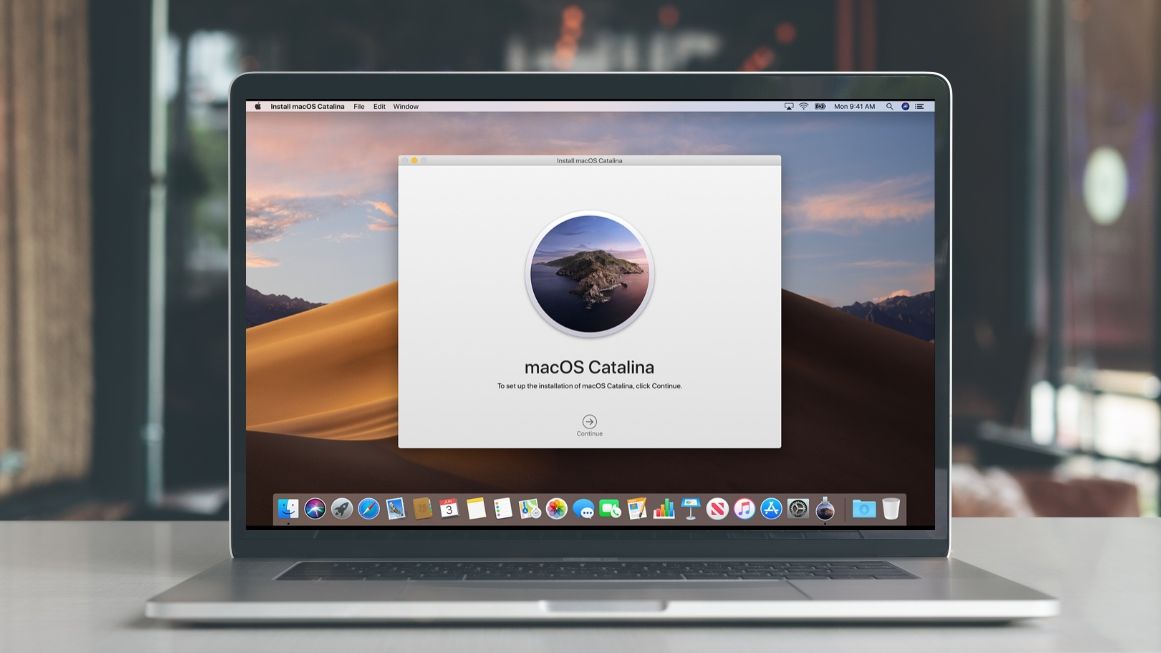- Installing Macos Catalina
- How To Reinstall Macos Catalina From Usb
- Installing Os X Catalina
- Reinstall Os X Catalina
- Installing Macos Catalina From Usb
Clean Reinstall Mac Os X With macOS Catalina officially released, more and more people jump on the bandwagon to try its expanded features, such as screen extension with an iPad or the new Apple Podcasts app.
If you have installed Big Sur, Catalina, Mojave or earlier versions, you may have to reinstall macOS for following reasons:
How to Reinstall mac OS Without Losing Personal Data Reinstalling macOS (sometimes also called a “factory reset”) is usually a rare event, and you shouldn’t have to worry about it too much. But there are specific issues, self-inflicted or not, that are much quicker resolved with a clean installation of the OS. To reinstall a new copy of macOS Catalina Latest or Earlier macOS Mojave, you need a good quality internet connection. Otherwise, you have to wait for a long time or Stuck the download in-between the installation. The simplest way to reverse an OS update is to restore from an earlier Time Machine backup - one you made before upgrading to Big Sur (or Catalina if you want to go back further). If your Mac already runs macOS Big Sur, download the macOS Catalina here. Get an external hard drive that has at least 12 GB of available storage and plug it in your Mac. Launch the Disk Utility app and erase your hard drive selecting Mac OS Extended format. Now, it’s time to transfer your Catalina installer to your hard drive.
- Reinstall When There is New macOS Version Available

Apple keeps working constantly to fix bugs, make performance tweaks, add new features or enhance coding. Therefore, doubtless, there will be new versions of macOS available to upgrade and reinstall.
- Your Mac is Running Slow
As we all know, for no specific reason, system reinstallation can magically solve a slow Mac in most cases.
- Your System Keeps Crashing or Works Improperly
Installing Macos Catalina
When you continuously see error messages appear on your mac, or your programs randomly crash/freeze for no reason, like FaceTime won't work, Contacts or Calendar shows a delay or mess, blue teeth or WiFi won't connect…Then, you have a good reason to reinstall macOS.
- You are Going to Sell the Mac
In the case that you want to sell your mac, besides erasing all your personal data and traces on the mac, you will need to reinstall macOS as well.
It is not complicate to reinstall macOS Big Sur or Catalina, but if you want to reinstall macOS without losing data, there are 3 steps you must follow.
Recover Files after macOS Reinstall
- Recover data lost due to macOS reinstallation, upgrade, downgrade
- Recover data lost due to accident deletion, formatting, etc.
- Restore data from both internal and external storage device
- Recover videos, audios, images, documents, and other 200+ files
- 5 recovery modes to find files back easily
- High recovery rate
- Support Big Sur, Catalina, Mojave and earlier
3 Steps to Reinstall macOS Big Sur or Catalina without Losing Data
How To Reinstall Macos Catalina From Usb
We all save tons of data on our Mac, so when we decide to reinstall macOS Big Sur/Catalina, the top concern always goes to “will I lost everything if I reinstall macOS”. In fact, reinstallation of macOS doesn’t necessarily cause lost data, it just create a new copy, your existing files and data saved in programs won't be altered or deleted. But just in case of bad luck, we need to do some work on BACKUP, this is crucial for macOS reinstallation without losing data.
Step 1. Prepare Your Mac for Reinstallation.
- Make enough room for Big Sur or Catalina reinstallation, at least 36GB, so the reinstallation process won't pause or stopped for insufficient space.
- Also, quit all apps or programs under work, so your Mac is fully geared to reinstall.
- Check drive conditions. Open Disk Utility and perform the Frist Aid on your hard drive where to reinstall the macOS to make sure your drive is in good condition for reinstallation.
Step 2. Backup All Your Files for macOS Install (Crucial)
Backup is an indispensable step involved in the macOS reinstallation, here are several options to backup your data.
Option One: Using Time Machine
- Go to Finder>Application, launch Time Machine and choose “Set Up Time Machine”.
- Click “Select Backup Disk” to choose an external hard drive to back up the files.
- Then Check the box before “Back Up Automatically”. Also, you can adjust the backup setting in menu “Options”.

If this is the first time you use Time Machine to backup, wait patiently for Time Machine to complete the backup, it will prompt the notification once finishes.
Option Two: Using Hard Drive
- Connect your hard drive to Mac.
- Open Finder to check if your hard drive is present under “Devices”.
- Create a new folder, copy and paste or directly move the items you want to save from Mac to this folder.
- Finally, eject your hard drive.
Option Three: Using iCloud Service (Backup Desk and Documents Folders)
- Go to Finder>System Preference, click on “iCloud” to bring up its main interface.
- Click the “Options” button for “iCloud”, and check the box before “Desktop and Documents Folders”, then click on “Done”.
Most of our mac users prefer to backup all files but apps. So, to save you from troubles of lost data due to macOS reinstallation, you are recommended to keep records of what apps you have installed, the account and password, also, you can take screenshots of the settings.
Step 3. Reinstall macOS Big Sur or Catalina without Losing Data.
Option #1: Reinstall macOS without Losing Data From Internet Recovery
- Click the Apple icon>Restart.
- Hold down the key combination: Command+R, you will see the Apple logo.
- Then choose “Reinstall macOS Big Sur” from utilities window and click “Continue”.
- Select your hard drive, click “Install” and wait for end of reinstallation.

Option #2 Reinstall macOS without Losing Data From USB
- Download the macOS Big Sur install from Mac App Store onto your Mac;
- Then connect the USB flash drive to your Mac;
- Open Disk Utility program on your Mac, choose the USB flash drive and click Erase to have a clean drive for the reinstallation;
- Open Terminal, copy and paste sudo /Applications/Install macOS Big Sur.app/Contents/Resources/createinstallmedia;
- Then add the volume of usb flash drive: --volume /Volumes/MyVolume, replace MyVolume with your usb flash drive name, mine is Untitled;
- Press Enter, input password and wait for the process to finish;
- Quit Terminal, restart your Mac, hold Command+R when starting Mac until you see the apple logo;
- Login into your Mac with password, go to the menu bar>Utilities>Startup Security Utility, enter password again;
- Choose Medium Security under Secure Boot and allow booting from external media;
- Restart your Mac, in the same time, hold the Option key;
- Choose Install macOS Big Sur, click Next and input password, choose Install macOS, continue to finish mac reinstallation from usb.
Mac Won't Turn on after Update to macOS Big Sur?
Here are 10 solutions to fix 'Mac won't turn on after update to macOS Big Sur, Catalina or other versions'.
READ MORE >What if You Lost Data After macOS Big Sur Reinstallation?
However, losing data after reinstallation still happens. It may result from a interrupted installation (power-off/poor internet connection), corrupt setup, insufficient space or improper actions. Then, what to do if you lost data after reinstallation? Here are 2 methods.
Method 1: Use Cisdem Data Recovery to Recover Data
In the case you didn’t do backup before reinstallation, you will need a dedication data recovery program to find the lost data for you.
Here we recommend Cisdem Data Recovery, a powerful mac program allowing users to recover lost/deleted/corrupted/formatted files from a wide range of external or internal storage devices, no matter the file is lost due to human errors, power-off, reinstallation, upgrade, virus attack or disk crash.
Main Features of Cisdem Data Recovery
- Recover files lost due to OS reinstallation, upgrade, downgrade;
- Recover deleted, formatted and lost files;
- Restore files from internal and external hard drive, USB, SD Card, flash drive, etc.;
- Restore videos, audios, images, documents, archives, 200+ types;
- 5 recovery modes: Basic, External Drive, Formatted Drive, Trash, Advanced;
- Preview files before recovery;
- Fast scanning and recovery;
Steps to Recover Lost Data after MacOS Reinstallation
Installing Os X Catalina
- Download and install Cisdem Data Recovery on Mac.
Free Download - Choose a Recovery Mode according to your need.
If you want an efficient recovery, choose “Basic Data Recovery”, if you want to recover files with a higher success rate, try “Advanced Data Recovery”. - Select the hard drive where you originally stored the files on mac. Then click “Scan”.
- Check and preview files found by Cisdem Data Recovery.
- Select files to recover.
Check the box before files that you want to recover, then click “Recover” to find back the lost data caused by reinstallation.
Method 2: Use Time Machine to Recover Data with Backup
If you have backed up your files on mac, you can use Time Machine to restore the lost data.
- Step1. Go to Finder>Applications>Time Machine, launch it and choose “Enter Time Machine”.
- Step2. In the popped-up window, use the arrows and timeline to browse the local snapshots and backups.
- Step3. Find the deleted files, then click “Restore” to recover the lost data caused by reinstallation.
Conclusion
The key to reinstall mac OS Big Sur, Catalina or Mojave without losing data is the backup, since no one can guarantee all data will be perfectly maintained after macOS reinstallation. However, if we unfortunately lost files after macOS reinstallation, Time Machine or Cisdem Data Recovery is helpful to recover them back.
So, do you have any other tips to reinstall macOS without losing data? Please share with more of our mac users.
How to access and use the Internet Recovery mode on Mac computers?
Apple computers are well-known as stable devices with good performance and hardware specifications. The Mac operating system also includes various self-diagnosis and repair tools. Bear in mind, however, that these features might be susceptible to failure. When built-in tools or software-based solutions do not work, the last and most efficient solution is to reinstall the operating system. All modern Mac computers contain two separate methods to reinstall the operating system (by 'reinstall', we mean installation of a fresh OS X version). You can choose to install the operating system from a startup disk or via Internet Recovery.
In this article, we describe the second method: Internet Recovery to install the operating system version that came with the version of your computer. If your computer was released with OS X Mavericks, using Internet Recovery will install this particular version, while reinstallation from the recovery partition will result in a fresh version of the current operating system. Therefore, if you perform the reinstallation process via the Recovery utility, you will receive the same operating system version that existed prior to reinstallation. The Internet Recovery method is useful if you wish to downgrade the operating system. A big advantage of this method is the ability to bring back the computer to full functionality when software is corrupted. Note, however, that stable internet access is required to perform the reinstallation process via Internet Recovery. An unstable Internet connection can lead to the process crashing and no access to the computer. Therefore, you are advised to use an Ethernet network, rather than Wi-Fi. In this article, we walk through the entire Internet Recovery method.
Table of Contents:
It is recommended to run a free scan with Combo Cleaner - a tool to detect malware and fix computer errors. You will need to purchase the full version to remove infections and eliminate computer errors. Free trial available.
Requirements to access Internet Recovery Mode
Ensure that the Mac meets the minimum requirements to access Internet Recovery mode. All compatible computers are listed below. Bear in mind that some earlier versions of Apple devices might also use this feature. Apple state that Firmware updates grant access to Internet Recovery mode. If your device is older than the machines listed below, check the Apple firmware updates list here.

- MacBook Pro (13-inch, Early 2011)
- MacBook Pro (15-inch, Early 2011)
- MacBook Pro (17-inch, Early 2011)
- iMac (21.5-inch, Mid 2011)
- iMac (27-inch, Mid 2011)
- MacBook (13-inch, Mid 2010)
- MacBook Pro (13-inch, Mid 2010)
- Mac mini (Mid 2010)
- MacBook Pro (15-inch and 17-inch, Mid 2010)
- iMac (21.5-inch and 27-inch, Mid 2010)
- MacBook Air (11-inch and 13-inch, Late 2010)
If you wish to reinstall the Mac operating system, your network must use DHCP and WPA/WPA security methods. All authentication methods listed below are incompatible with macOS installation via Internet Recovery. If your network uses one of the methods listed, change the setting to a compatible configuration (at least for the purpose of the installation process).
- WEP
- WPA-Enterprise
- Certificate-based authentication / 802.1x
- Proxies (where specific proxy servers must be configured in network preferences)
- Captive Wi-Fi networks (where you click an “Agree” button to access the Internet)
- PPPoE (where there is no router handling the PPPoE connection)
Reinstall operating system by using Internet Recovery mode
When you are sure that the Mac is able to access Internet Recovery mode, there is another important task before installing the fresh operating system version. After a successful reinstallation process, the computer will contain only the default software (which is delivered with macOS). All personal data and applications that you have manually applied to the hard disk will be erased. To protect your personal data, create a backup with Time Machine or similar software. Finally, when you are ready to reinstall the operating system, click the Apple logo in the menu bar at top of the screen and select Restart or Shut Down. Once the system starts booting and you hear the startup chime, hold down the combination of Command, Option (Alt), and R.
Reinstall Os X Catalina
Keep holding these keys until the animated globe appears with the message below stating 'Starting Internet Recovery' and 'This may take a while'. Note: If you are using a Mac laptop, use the built-in keyboard to access Internet Recovery Mode, since keystrokes might not register properly on external keyboards.
Next, select the Wi-Fi network. If you are not using an Ethernet network, click the drop-down menu and select the desired network. You must confirm access to a Wi-Fi network by entering the password. Then press Return on the keyboard or click the checkmark symbol on the screen to continue.
After successful authentication to achieve the network connection, the Mac will begin to download a recovery system image from Apple's servers. You will see a progress bar monitoring the status of the download. Depending on your internet connection, this process may take some time. Ensure that the computer is connected to the power adapter.
Installing Macos Catalina From Usb
When the image is downloaded, the OS Utilities window will pop-up, giving access to the usual features, such as Restore from Time Machine Backup, Reinstall OS X, Get help online, and Disk Utility. From this point, the process will be similar to the reinstallation via recovery partition. Detailed information about how to install the macOS can be found in this article.